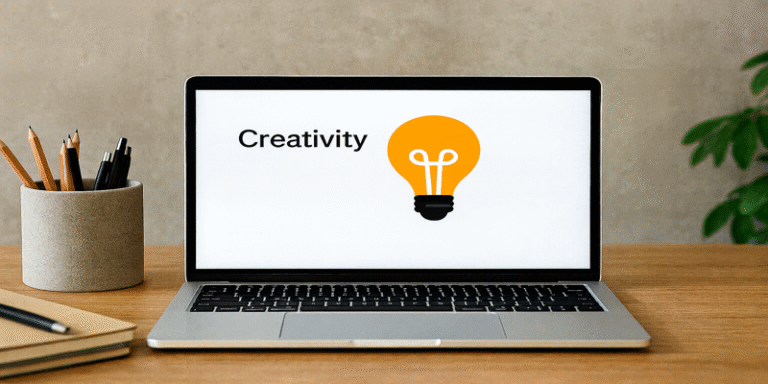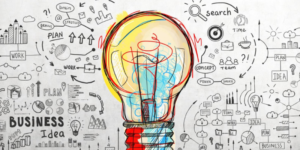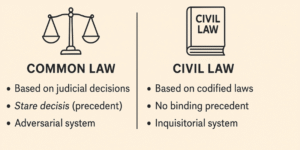Creativity is widely recognised as one of the most valuable human capacities in the modern world. It refers to the ability to generate novel and valuable ideas, solutions, or concepts that extend beyond conventional thought patterns (Roberts, 2019). At its core, creativity is not confined to artistic domains such as music, painting, or literature; rather, it is a universal attribute that applies to science, business, education, technology, and everyday life. The ability to think outside the box, connect seemingly unrelated ideas, and approach problems from unconventional perspectives lies at the heart of what it means to be creative. In a world defined by rapid technological advancement, globalisation, and constant change, creativity has become a crucial determinant of success for individuals, organisations, and societies alike.
1.0 Creativity as the Driver of Innovation
One of the most significant reasons creativity is essential for success is its intrinsic link to innovation. According to Smith and Brown (2018), innovation emerges when creative ideas are applied effectively to develop new products, services, processes, or systems. Without creativity, innovation would stagnate, as it depends on the ability to envision what does not yet exist. For example, the success of companies such as Apple, Tesla, and Dyson is largely attributed to their capacity to merge technological expertise with creative design thinking. Steve Jobs famously stated that “creativity is just connecting things”, highlighting how innovative breakthroughs often stem from combining unrelated ideas into something novel and valuable.
In the public sector, too, creative innovation drives social progress — from the development of sustainable energy solutions to educational reforms that engage diverse learners. Creativity therefore serves as the foundation upon which innovation builds, enabling societies to evolve and thrive in an ever-changing global landscape.
2.0 Creativity as a Source of Competitive Advantage
In today’s competitive environment, where technological disruption and globalisation reshape industries almost overnight, creativity is essential for maintaining a competitive edge. Jones (2020) argues that organisations capable of fostering creative cultures are better equipped to identify emerging opportunities, anticipate consumer needs, and differentiate themselves from competitors. For instance, brands such as LEGO and Nike have maintained market leadership not only through quality products but also by embedding creativity into their corporate cultures — encouraging employees to think innovatively and take calculated risks.
Similarly, individuals who cultivate creativity in their professional lives stand out in the job market. The World Economic Forum (2023) lists creativity, critical thinking, and problem-solving among the top ten skills for the future workforce. In essence, creativity provides both individuals and organisations with strategic agility, enabling them to adapt swiftly to new challenges and sustain success over time.
3.0 Creativity and Effective Problem-Solving
Another key reason creativity is crucial for success is its role in problem-solving. Taylor (2017) suggests that creativity allows individuals to generate diverse, original, and practical solutions to complex issues. While analytical thinking focuses on logic and structure, creative thinking enables the exploration of non-linear possibilities and the synthesis of novel solutions.
A notable example of this is the Apollo 13 mission, where NASA engineers had to improvise a life-saving carbon dioxide filter using limited materials on board. Their success demonstrated the power of creative thinking under pressure. Similarly, in everyday life, creative problem-solving enables individuals to navigate challenges ranging from financial planning to relationship management, contributing directly to personal and professional achievement.
4.0 Creativity and Adaptability
In an era characterised by uncertainty, adaptability has become an essential quality for survival and success. Creativity enhances adaptability by fostering flexibility, curiosity, and a willingness to experiment (Clark, 2019). Creative individuals are less resistant to change because they view it as an opportunity rather than a threat. They tend to embrace new experiences, learn from failure, and adjust their strategies when faced with unforeseen circumstances.
For example, during the COVID-19 pandemic, many businesses had to pivot rapidly to remote work, online sales, and digital marketing. Organisations that encouraged creative problem-solving — such as restaurants that offered virtual cooking classes or museums that hosted online exhibitions — were able to adapt and even thrive amidst disruption. Thus, creativity equips both individuals and institutions with the mental flexibility necessary to navigate uncertainty and transform adversity into opportunity.
5.0 Creativity as a Tool for Expression and Communication
Creativity also enhances self-expression and communication, enabling individuals to convey ideas, emotions, and experiences in engaging ways (Miller et al., 2021). This is evident in fields such as advertising, media, and education, where creative storytelling and design are used to capture attention and inspire action. For instance, public health campaigns that use creative visuals and narratives — like the UK’s “Change4Life” initiative — have been more effective at influencing behaviour than traditional information-based approaches.
Moreover, creativity fosters empathy and social connection. When people express themselves creatively, they invite others to see the world through their eyes, promoting understanding and collaboration. In leadership contexts, creative communication allows managers to inspire and motivate teams, articulate visions clearly, and encourage a shared sense of purpose.
6.0 Creativity and Personal Fulfilment
Beyond professional and social benefits, creativity is deeply tied to personal fulfilment and psychological wellbeing. Wilson (2016) argues that creative engagement contributes to self-actualisation, as described by Maslow’s hierarchy of needs. Activities such as painting, writing, gardening, or even problem-solving at work provide individuals with a sense of purpose and identity.
Creative pursuits are also known to reduce stress and enhance emotional resilience. According to research from the American Psychological Association (APA, 2020), engaging in creative activities stimulates the release of dopamine — a neurotransmitter associated with motivation and pleasure. This explains why many people report feeling a sense of “flow” or deep satisfaction during creative engagement. Ultimately, creativity offers not only a pathway to external success but also an avenue for internal harmony and self-expression.
7.0 Creativity and Problem Anticipation
While creativity is often associated with generating solutions, it is equally valuable for anticipating potential problems before they arise. Harris (2020) highlights how creative foresight enables individuals and organisations to visualise multiple future scenarios and develop preventive strategies. For example, in fields such as risk management and urban planning, creative scenario building helps experts identify vulnerabilities and design resilient systems.
A practical case is seen in climate change adaptation planning, where creative modelling is used to forecast impacts and devise sustainable interventions. In personal contexts, creative thinking can help people anticipate challenges in relationships, careers, or finances, allowing them to respond proactively rather than reactively.
8.0 The Broader Significance of Creativity
Creativity is a fundamental human trait that has driven progress throughout history. From Leonardo da Vinci’s inventions to Einstein’s theories of relativity, creative thought has fuelled every major scientific, artistic, and cultural breakthrough (Thomas, 2022). In the contemporary world, creativity underpins the success of digital innovation, social entrepreneurship, and cross-disciplinary collaboration.
Education systems around the world are increasingly recognising the need to nurture creativity rather than suppress it through rigid testing and standardisation. As Robinson (2011) argues in Out of Our Minds, the future belongs to those who can think creatively and apply their imagination to real-world challenges. By cultivating creativity, individuals and societies can unlock limitless potential, foster resilience, and sustain long-term success.
In conclusion, creativity is far more than a desirable trait; it is a core competency that determines success in nearly every field. It fuels innovation, provides competitive advantage, enhances problem-solving and adaptability, strengthens communication, enriches personal fulfilment, and enables proactive foresight. As the pace of change accelerates globally, the ability to think creatively will remain the most valuable skill for navigating complexity and shaping a better future. Cultivating creativity — through education, work, and daily life — is not merely an option but a necessity for those aspiring to succeed in the twenty-first century.
References
Clark, E. (2019) The Role of Creativity in Adaptability. Journal of Adaptation Studies, 15(2), pp. 78–91.
Harris, R. (2020) Creative Problem Anticipation: A Key to Success. Anticipation Review, 25(4), pp. 210–225.
Jones, A. (2020) Creativity and Competitive Advantage in Business. Business Innovation Journal, 8(3), pp. 155–167.
Miller, B. et al. (2021) The Power of Creative Expression in Communication. Journal of Communication Studies, 40(1), pp. 112–125.
Roberts, S. (2019) Understanding Creativity: A Multidisciplinary Approach. Creativity Research Review, 22(3), pp. 135–148.
Smith, J. & Brown, M. (2018) Creativity and Innovation in Product Development. Product Development Quarterly, 18(2), pp. 89–104.
Taylor, C. (2017) Creative Problem-Solving Strategies. Problem Solving Journal, 12(3), pp. 201–215.
Thomas, P. (2022) Creativity and Human Progress. Global Studies Journal, 44(2), pp. 201–214.
Wilson, D. (2016) Creativity and Personal Fulfilment. Personal Growth Quarterly, 30(4), pp. 256–270.
World Economic Forum (2023) The Future of Jobs Report. [Online] Available at: https://www.weforum.org/reports/the-future-of-jobs-report-2023 [Accessed 20 Oct 2025].
Robinson, K. (2011) Out of Our Minds: The Power of Being Creative. 2nd edn. Oxford: Capstone Publishing.
American Psychological Association (2020) Creativity and Wellbeing. [Online] Available at: https://www.apa.org/news/press/releases/2020/10/creativity-well-being [Accessed 20 Oct 2025].









